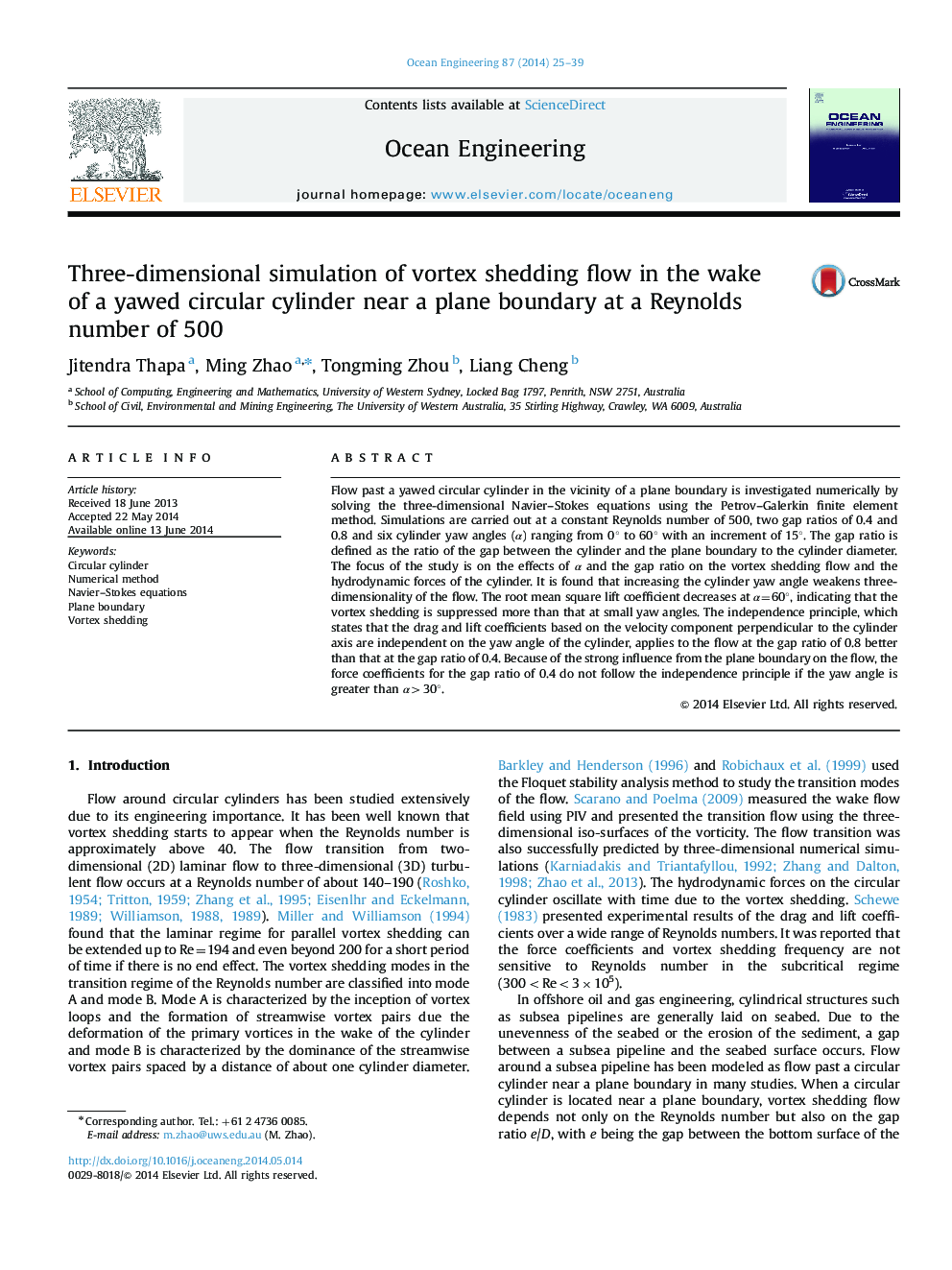| Article ID | Journal | Published Year | Pages | File Type |
|---|---|---|---|---|
| 1725580 | Ocean Engineering | 2014 | 15 Pages |
Abstract
Flow past a yawed circular cylinder in the vicinity of a plane boundary is investigated numerically by solving the three-dimensional Navier-Stokes equations using the Petrov-Galerkin finite element method. Simulations are carried out at a constant Reynolds number of 500, two gap ratios of 0.4 and 0.8 and six cylinder yaw angles (α) ranging from 0° to 60° with an increment of 15°. The gap ratio is defined as the ratio of the gap between the cylinder and the plane boundary to the cylinder diameter. The focus of the study is on the effects of α and the gap ratio on the vortex shedding flow and the hydrodynamic forces of the cylinder. It is found that increasing the cylinder yaw angle weakens three-dimensionality of the flow. The root mean square lift coefficient decreases at α=60°, indicating that the vortex shedding is suppressed more than that at small yaw angles. The independence principle, which states that the drag and lift coefficients based on the velocity component perpendicular to the cylinder axis are independent on the yaw angle of the cylinder, applies to the flow at the gap ratio of 0.8 better than that at the gap ratio of 0.4. Because of the strong influence from the plane boundary on the flow, the force coefficients for the gap ratio of 0.4 do not follow the independence principle if the yaw angle is greater than α>30°.
Related Topics
Physical Sciences and Engineering
Engineering
Ocean Engineering
Authors
Jitendra Thapa, Ming Zhao, Tongming Zhou, Liang Cheng,
